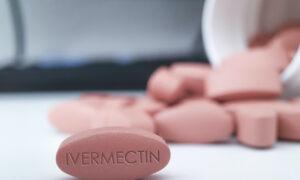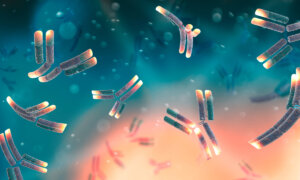Post-COVID Vaccine Syndrome Is a Physiological Disease: Study
The authors compared blood tests of people diagnosed with persistent dysautonomia and chronic fatigue syndrome after vaccination to healthy controls.
A new study may have finally found biological proof of post-COVID vaccine syndrome.
The German study, led by Dr. Fritz Boege, professor of clinical chemistry and laboratory medicine at the University Hospital of Düsseldorf, showed that people who developed persistent symptoms for up to five months post-vaccination have different immune protein levels than vaccinated, asymptomatic people.
“It’s really the first recognition that biomarkers may be involved in [COVID-19 vaccine injury],” internal physician Dr. Keith Berkowitz, who was not involved in the study, told The Epoch Times. “No. 2, they’re looking five to six months post-vaccination, and that really dispels the literature that these side effects are transient.”
“PACVS is currently not/rarely diagnosed in terms of a [physical] disease. Instead, PACVS cases tend to be classified as psychosomatic or discarded as irrelevant or imaginary,” the authors wrote.
The study provides “evidence of PACVS as a [physical] disease,” they concluded.
Biomarkers Indicate Immune Dysregulation and Clotting
The authors compared blood tests of 191 people diagnosed with persistent dysautonomia and chronic fatigue syndrome five months after vaccination to 89 healthy controls.
The controls had their blood samples taken both before and after vaccination and did not develop any pathological symptoms following vaccination.
IL-6 and IL-8 cytokine levels, which promote inflammation and are associated with the formation of blood clots, were significantly elevated in PACVS patients.
PACVS patients also had significantly higher AT1R and MAS 1 antibodies and lower IL-1-Rb and alpha-2b-adr-R antibodies.
The reverse was reported in the healthy control group.
AT1R and MAS 1 are involved in the body’s fluid balance and cardiovascular regulation. High antibody levels against this system are related to dysautonomia, heart failure, chronic fatigue, and severe COVID-19.
Interestingly, the authors saw the reduction of AT1R and MAS 1 in the healthy control group as potentially protective. They reasoned that the bodies of healthy controls managed to adapt to the effects of the vaccine and, in turn, avoid developing post-vaccine symptoms.
IL-1-Rb and alpha-2b-adr-R antibodies may have increased to protect the healthy control group for the same reason.
“Receptor antibody levels in sera of PACVS-affected persons were dissimilar from the post-vaccination state but similar to the pre-vaccination state of persons not suffering from PACVS,” the authors wrote. Therefore, they reasoned that the post-vaccine condition may be related to a poor physiological adjustment to the effects of the mRNA vaccines.
Study Limitations
A major limitation is that while healthy controls were tracked for their biomarker changes before and after vaccination, no pre-vaccination sample was taken from the people who developed post-vaccine syndrome.
Therefore, it is unknown if patients developed such symptoms because of changes in their blood markers or if they had those markers to begin with, Dr. Berkowitz said.
“They have a relatively small sample size,” nurse practitioner Scott Marsland at the Leading Edge Clinic said. “The timeframe they’re working with is also relatively short. A lot of the patients that I see, unfortunately, are a year or two years out.”
Some PACVS patients had a prior COVID-19 infection, but the researchers noted that the difference in biomarkers between the infected and those not infected was insignificant.
There is also considerable overlap in the relevant biomarkers in post-vaccination syndrome and long COVID, including IL-6, IL-8, and AT1R antibodies.
Further studies may be necessary to determine if the suggested biomarkers are sufficient to distinguish PACVS from long COVID and symptomatically similar conditions like chronic fatigue syndrome, the authors wrote.
The Use of Biomarkers in Diagnosis and Treatment
The authors stated that, while the current diagnostic biomarkers may not be sufficient, the use of blood markers may serve as “a stringent rule-out criterion” for future diagnostics of PACVS.
Clinicians, however, are at odds about using biomarkers for diagnosing and treating post-vaccine syndromes.
Integrative physician Dr. Yusuf Saleeby said that using biomarkers as a diagnosis may confuse clinicians.
“I have seen biomarkers go either way, with a very sick patient post-vax having normal biomarkers, including IL-6, and some rather well-looking patients with abnormally high IL-6,” he said. However, he has not measured AT1R or alpha-2b-aR antibodies, he added.
“I don’t think that it’s that simple,” Mr. Marsland said, adding that the immune dysregulation from one individual to another is highly heterogeneous, and biomarkers could vary.
Many of Mr. Marsland’s patients have normal IL-6 levels, and had he used the biomarker levels as a guide, common post-vaccine treatments like low-dose naltrexone, which reduces IL-6, may never have been prescribed, he said.
Yet pathologist Dr. Bruce Patterson, the founder of IncellDx, a company that sells diagnostic cytokine panels for long COVID and post-vaccine syndromes from other chronic diseases, argued that biomarker patterns can be very helpful in coming to a suitable diagnosis and treatment for patients.






